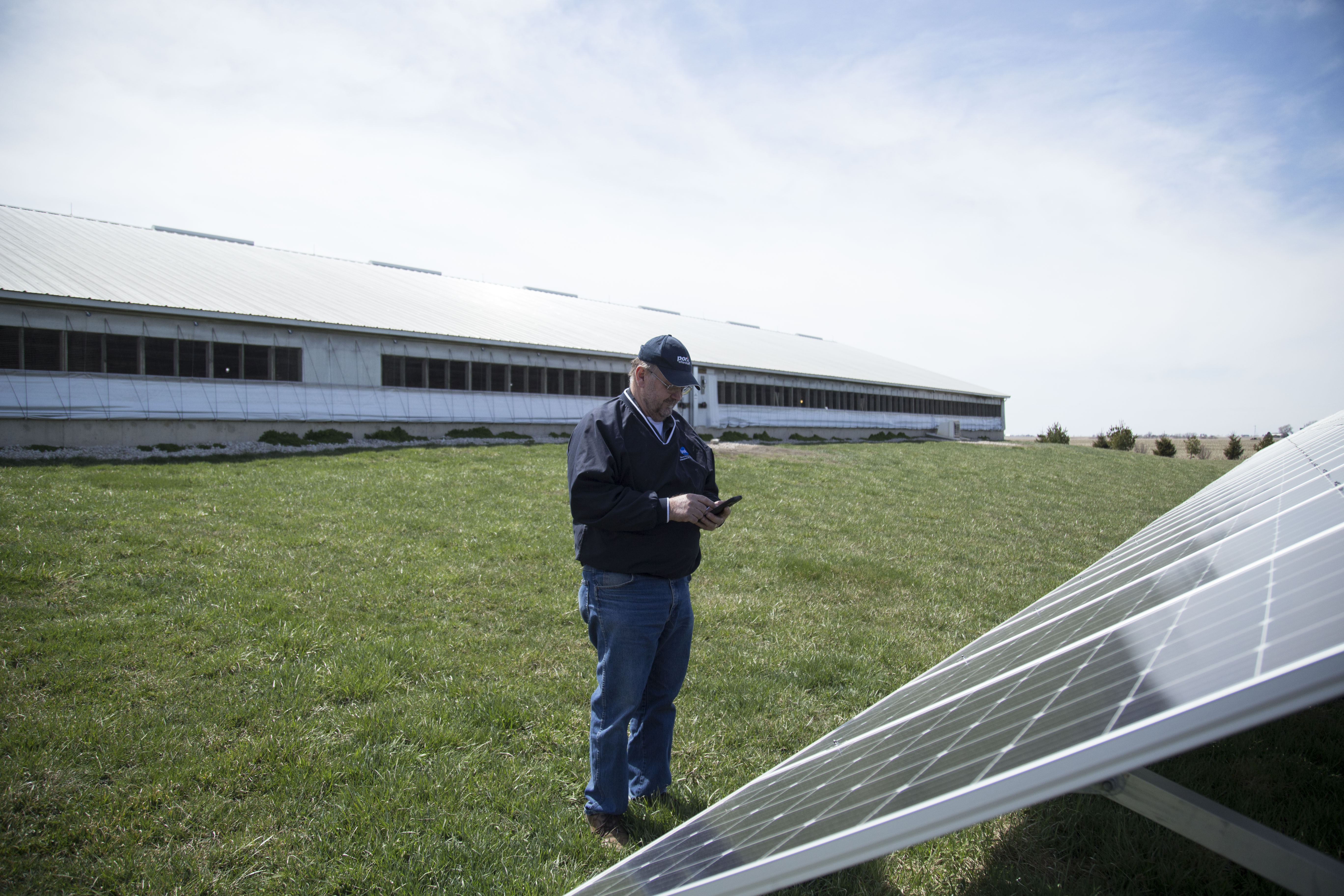(image)
In honor of Earth Day, we take a moment to reflect on the contributions that pig farmers are providing the earth, each and every day. Our responsibility is big, but our commitment to keeping the farm thriving for the next generation, is even bigger.
1. Alternative Energy Sources
Pig farmers are utilizing alternative sources of energy to power their farms. For example, solar panels on Gary Asays farm in Osco, IL provide enough electricity that he doesnt have a power bill for the pig barns. The panels capture sunlight and convert it into energy, which then powers his farm. He has a net metering agreement with the power company. When they produce more energy than needed, excess goes into the power grid. When they don't produce enough, he can pull power off the grid. The panels are connected to an app on his cell phone where he can track the incoming energy levels.
Picture Caption: Pig Farmer, Gary Asay of Osco, checks the app on his phone to see the productivity of his solar panels, which are powering his pig barns. 2. Soil Health
Pig manure is contained in deep concrete pits underneath pig barns. Slatted floors allow manure from the animals to fall beneath them and keep them clean. When the time is right, farmers carefully pump out manure from the pits to farm machinery that injects it beneath the horizon to crop fields. Manure is a highly valuable, organic fertilizer that boosts soil health and crop production. Specifically, manure increases organic matter in the soil, water-holding capacity, and enhances soil-biodiversity, fostering a wide range of insect and bird species.
00493_Manure_Application.jpg
Picture Caption: A tractor and manure applicator inject manure beneath the soil, to provide nutrients for the upcoming crop. 3. Air Quality
According to the U.S. Environmental Protection Agency (EPA) in 2016, only 3.9 percent of U.S. GHG emissions came from animal agriculture, and pork production contributed even less at 0.35 percent. Pig farmers know that there is potential to lessen that number even more. To do so, farmers are planting tree buffers around their pig farms to recycle air. Trees inhale carbon dioxide and exhale oxygen. This natural process helps to clean the air. As a tree matures, it can consume 48 pounds of carbon dioxide per year. It also releases enough oxygen to supply your (human) needs for two years. IPPA has provided three rounds of cost-share funding for pig farmers to plant tree buffers on their farms. So far, 18 counties and 21 farms have taken part in this initiative. You can find a map of all these tree buffers at ilpork.com.
00494_Monarch_on_a_Milkweed.jpg Coming soon pollinator plantings! IPPA is currently working with a family farm in Knox County to grow a pollinator plot to ensure the future of Monarch butterflies in Illinois. With the manpower from ROWVA school and seed donation from GROWMARK, the Ericksons will soon have a lush butterfly habitat.











